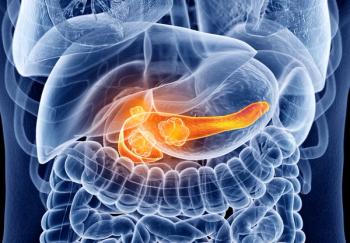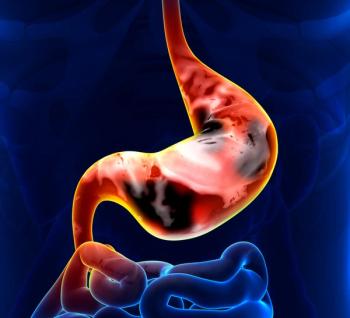
Oncology NEWS International
- Oncology NEWS International Vol 9 No 6
- Volume 9
- Issue 6
Microsatellite Instability Linked to Longer Colon Cancer Survival
Microsatellite Instability Linked to Longer Colon Cancer Survival
TAMPA, FlaOver the last 5 years, researchers have identified two major types of genetic instability that occur relatively early in cancer development, Mark Redston, MD, of Mount Sinai Hospital, Toronto, said at the American Cancer Societys 42nd Annual Science Writers Seminar.
The more common of these genetic instabilities is chromosomal instability, which is present in about 85% of cancers and is characterized by gross alterations in the chromosomal structure. The second form, microsatellite instability, is present in about 15% of cancers and features subtle DNA mutations, particularly in the regions of repetitive sequences known as microsatellites.
The exact cause of chromosomal instability remains mostly unknown, Dr. Redston said, but microsatellite instability is known to stem from a failure of the normal DNA mismatch repair process. In cancers with microsatellite instability, one of the normal DNA mismatch repair proteins is turned off by a mutation, resulting in failure to correct spontaneous DNA mutations, he said.
In 80% to 90% of colorectal cancers with microsatellite instability, the mismatch repair gene abnormality is present only in tumor cells. In approximately 10% to 20%, however, the mismatch gene defect is associated with hereditary non-polyposis colorectal cancer (HNPCC) and is present in both tumor cells and normal cells.
Dr. Redston and his colleagues Drs. Steven Gallinger and Robert Gryfe were the lead investigators in a study of 607 colorectal cancer patients in southern Ontario to determine if microsatellite instability is associated with distinct clinical behavior of tumors. All of the cancers were tested for microsatellite instability using polymerase chain reaction (PCR). Then clinical features and survival were compared between the tumors with and without microsatellite instability.
High-frequency microsatellite instability was found in 17% of the colorectal cancers, Dr. Redston said. In a multivariate analysis, microsatellite instability was associated with a significantly increased survival rate. About 50% of patients with microsatellite-stable cancers were dead after 10 years, compared with about 25% of those whose cancers had microsatellite instability, he added.
Furthermore, regardless of the tumors size or depth of invasion, cancers with microsatellite instability were less likely to metastasize to distant sites. Interestingly, he said, pathologic findings revealed that microsatellite instability tended to confer a predisposition to poorly differentiated, right-sided cancers.
These recently published findings (N Engl J Med 342:69-77, 2000) suggest that the absence or presence of microsatellite instability may represent two distinct diseases. This hypothesis is strongly supported by differences in the underlying genetic mechanisms of cancer formation, Dr. Redston said.
He predicts that in the near future, microsatellite instability will become a standard test for classifying colorectal cancers, but added that more studies are required to determine how this could help oncologists tailor therapy for patients.
We dont fully understand why microsatellite instability is associated with improved survival; however, it is possible that the severity of the genomic instability renders these cells more susceptible to apoptosis, he speculated. It has also been noticed that these cancers are associated with an intense inflammatory response, he said, suggesting that the immune system is better able to stop them from metastasizing. Continued research into this area should give oncologists new and revealing insights about cancer cell behavior, Dr. Redston concluded.
Articles in this issue
over 25 years ago
Genentech Issues Warning on Herceptinover 25 years ago
How Physicians Can Effect Changes in Health Care Policyover 25 years ago
Four From Congress Receive Tsongas Awardover 25 years ago
NCI Targets Cancer Disparities With Community-Based Programsover 25 years ago
Mapping Predicts Nodal Status in Colorectal Cancer Patientsover 25 years ago
SSO President Tells Members: ‘Remember Your Core Values’over 25 years ago
HHS Grants $794 Million in Ryan White Funds to Improve HIV Servicesover 25 years ago
Rapid Dose Titration With Controlled-Release Oxycodoneover 25 years ago
Standard-Dose Chemo May Have Long-Term Cognitive EffectsNewsletter
Stay up to date on recent advances in the multidisciplinary approach to cancer.

















































































